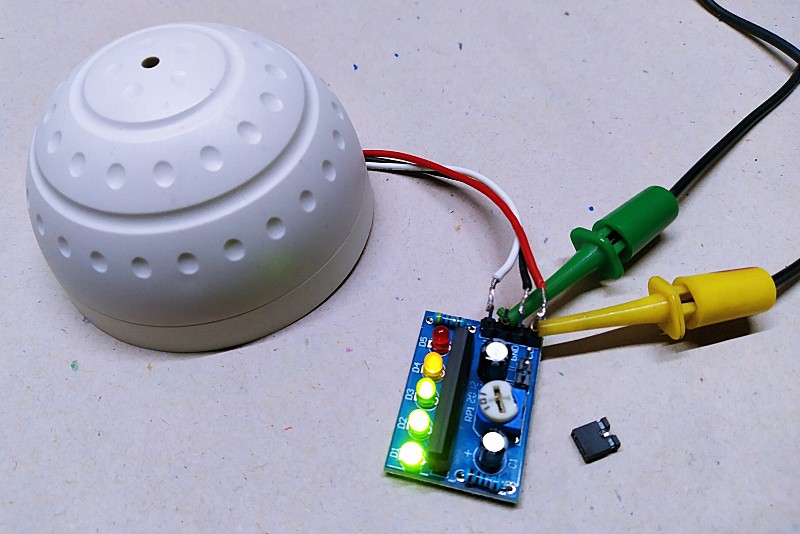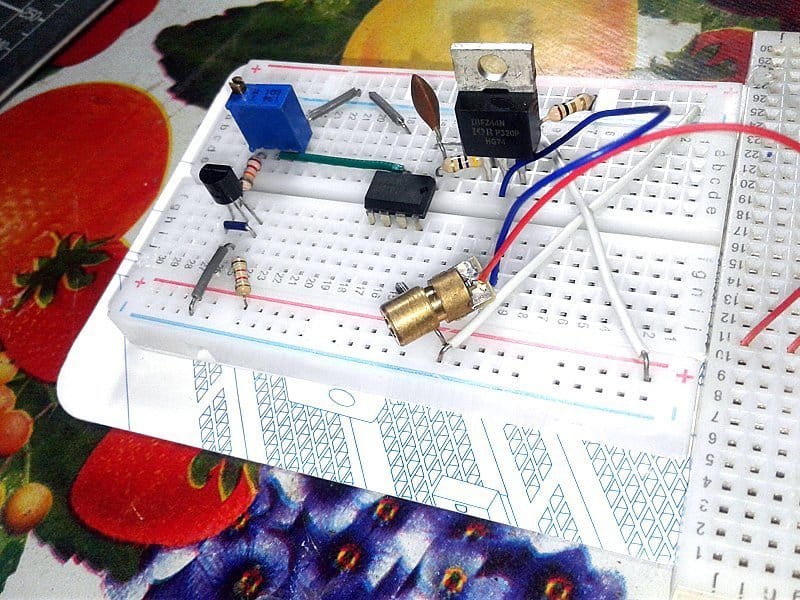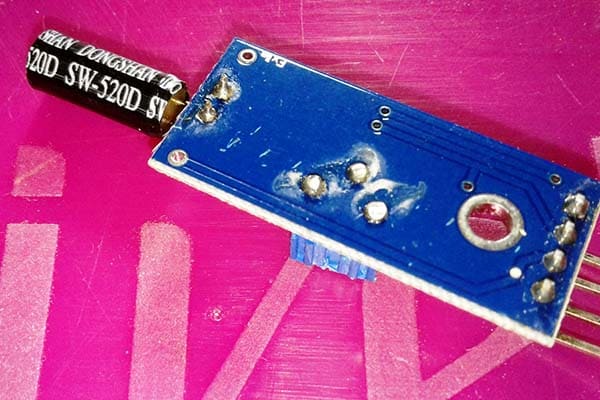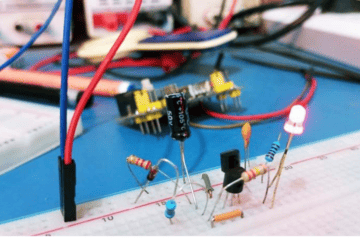It’s not always necessary to have a costly microcontroller to make a fancy sound level meter or battery level meter. Of course, there’re still a lot of old ways to try those ideas. A good example is the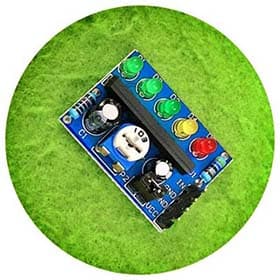 KA2284 IC or its pre-wired module!
KA2284 IC or its pre-wired module!
Another good choice is the LM3914 and LM3915 ICs. But since this post is not about them, I will not go into that topic right now!
The KA2284 is a monolithic IC designed for 5-segment LED level meter drivers with an inbuilt rectifying amplifier. It’s suitable for AC/DC level meters such as volume unit meters or signal meters. First off, see its datasheet https://datasheet.octopart.com/KA2284-Samsung-datasheet-106287.pdf
Here’s the basic schematic of the commonly available KA2284 module. Actually, the design is completely conventional, and it strictly follows the basic application example you can find in the KA2284 datasheet published by Samsung Electronics.
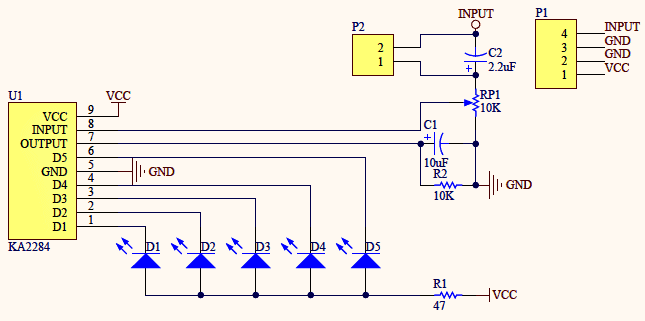
The KA2284 chip features a wide operating voltage (Vcc = 3.5 to 12V:: 18Vmax), and it has a 15mA typical constant current drive output. The LEDs are for the logarithmic indication (-10/-5/0/3/6dB) of the input signal level. Note, the recommended LED resistor (R1) value at 60°C (Ta (max)) is 47Ω when Vcc is in 8 to 12V range.
The KA2284 module can be used in DC mode as a battery level indicator or it can be employed in AC mode as a VU meter for audio signal strength indication. Note, the abbreviation VU stands for Volume Unit, which is used to express the average value of a music signal over a short time.
The module uses a total of 5 LEDs to implement a logarithmic dot indicator display. The LEDs (3 green, 1 yellow, and 1 red) wake up in sequence as the input voltage/signal increases. A single-turn potentiometer is used to set the ambit of the LED display.
The input circuit of the module includes a series capacitor for use with ac signals. There’s also a small jumper on board that shorts the input capacitor so that the module can be used with a dc voltage input (Jumper OFF = AC input & Jumper ON = DC input).
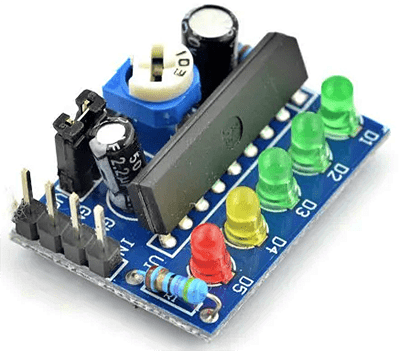
So, when summed up, the KA2284 module is smaller, simpler, and absolutely sufficient to build a nice level meter where only 5 LEDs are enough for indication.
An audio signal input can be feed via the isolating capacitor C2 to the trimpot RP1 to the input (Pin 8) of KA2284 (Jumper = OFF). Likewise, a dc voltage input can be routed directly to the same input of KA2284 but through the trimpot (Jumper =ON).
The sensitivity of the level indicator then can be continuously adjusted with the trimpot. Note that there’s a resistor and capacitor wired at the output of KA2284 IC’s internal amplifier (Pin 7). Resistor R1, which is in series with the power supply rail of the LEDs, limits the current flowing through the LEDs. The whole setup can be operated in the 4-12V (recommended) power supply range.
Needless to say, the heart of the module is the KA2284 IC, but you can also use some other matured ICs like AN6884 or BA6124 here without any circuit alteration.
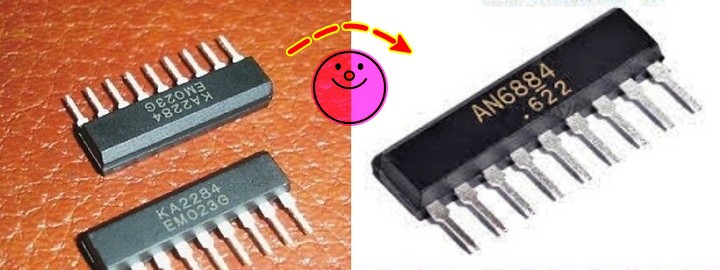
Now, to an example project that I envisioned. It’s a simple (hobby-level) 6F22 9V battery-powered noise level meter/display realized with the help of a common CCTV microphone and the KA2284 module. Recall, a noise level meter (sound level meter) is a measuring instrument used to assess noise or sound levels by measuring sound pressure (https://en.wikipedia.org/wiki/Sound_level_meter).
In order to get best results when using the particular “golf ball” surveillance microphone (https://www.flipkart.com/atekt-golf-ball-type-cctv-clear-voice-microphone-camera-pack-6/p/itm379a60dab8df6), while I couldn’t find the perfect value, I substituted the 10K default trimpot on the KA2284 module for a 100Ω trimpot which seemed to cause no ill effects.

My initial test setup looked like this:
To no surprise, it actually did work – watch the quick test movie (https://youtu.be/bEabhVUIOek).
Well, let me take a break for a while! Frankly, I’ve a few more projects based on these types of ICs on the to-do list, some of which I’ll post here in the near future. After that, you can also see some microcontroller-based smart level display projects, so stay tuned!

